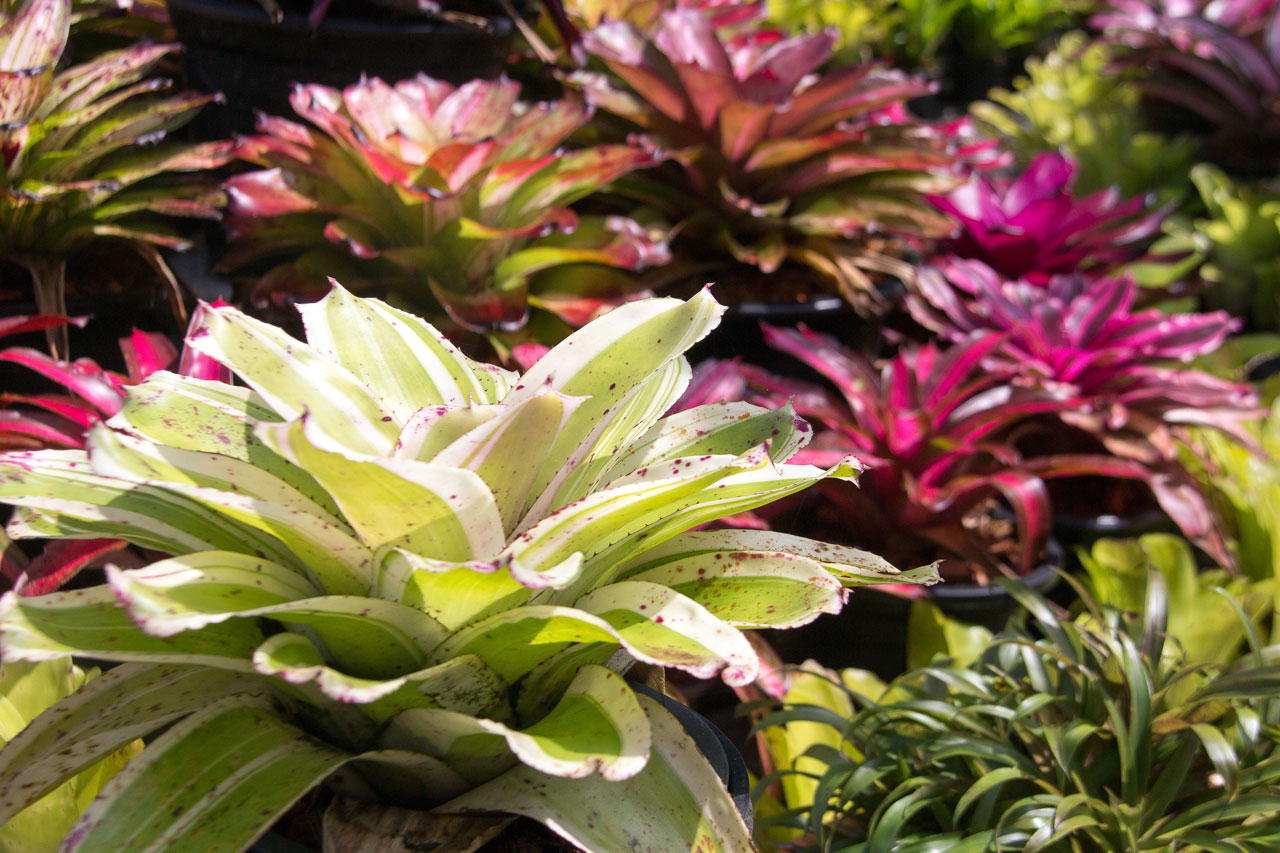Bromeliads are extraordinary plants known for their vibrant flower spikes and colorful foliage, making them a favorite among gardeners. Their stunning appearance and low maintenance make them an ideal addition to any garden. Our resident horticulturist Karen is especially fond of these beauties, and she believes no garden is complete without them!
Popular Types of Bromeliads
Did you know that one of the most famous bromeliads is a common fruit? That’s right—pineapples are part of the bromeliad family! Beyond pineapples, some of the most popular bromeliads include aechmeas, tillandsias (also known as air plants), vriesas, neoregelias, billbergias, and guzmanias. While these names may not be familiar to all, their striking appearances speak for themselves.
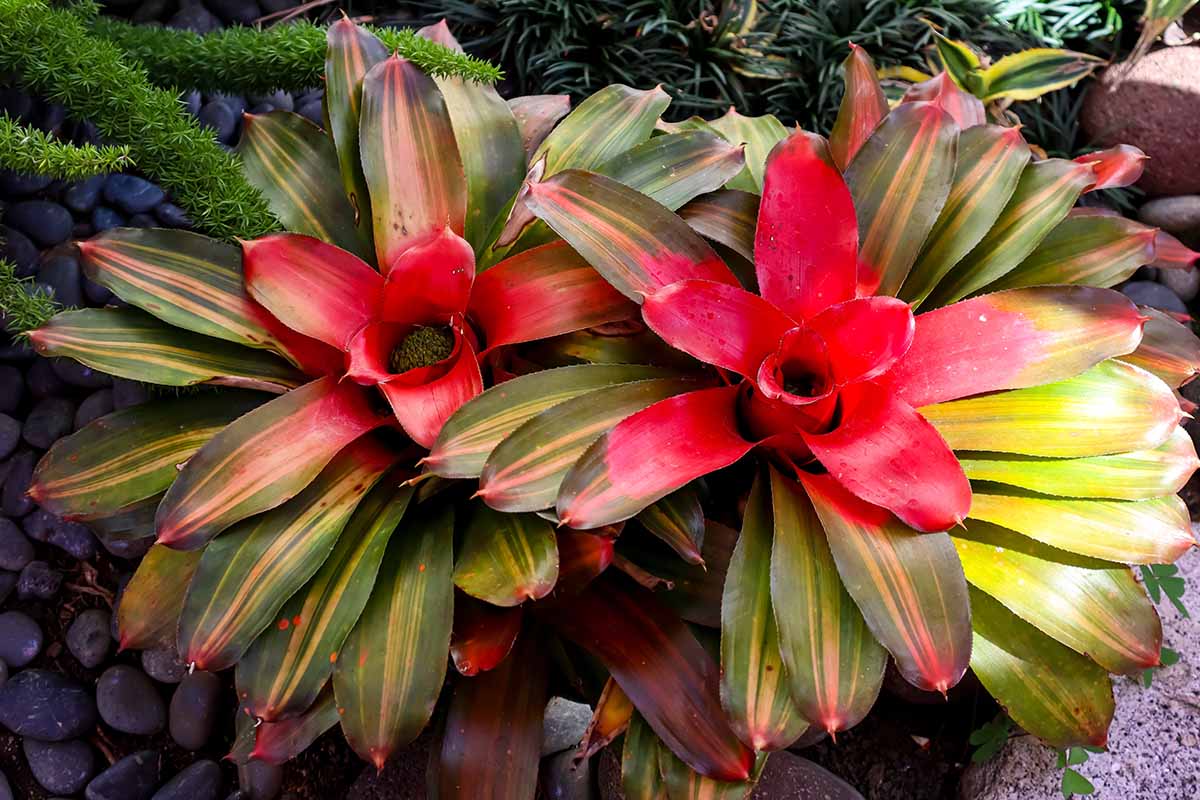
Bromeliads are unique in that some produce long-lasting, colorful flower spikes, while others display vibrant foliage during the flowering period. Some bromeliads even manage to do both! These plants are versatile, and you can bring them indoors when in bloom to enjoy their beauty before returning them to their outdoor environment.
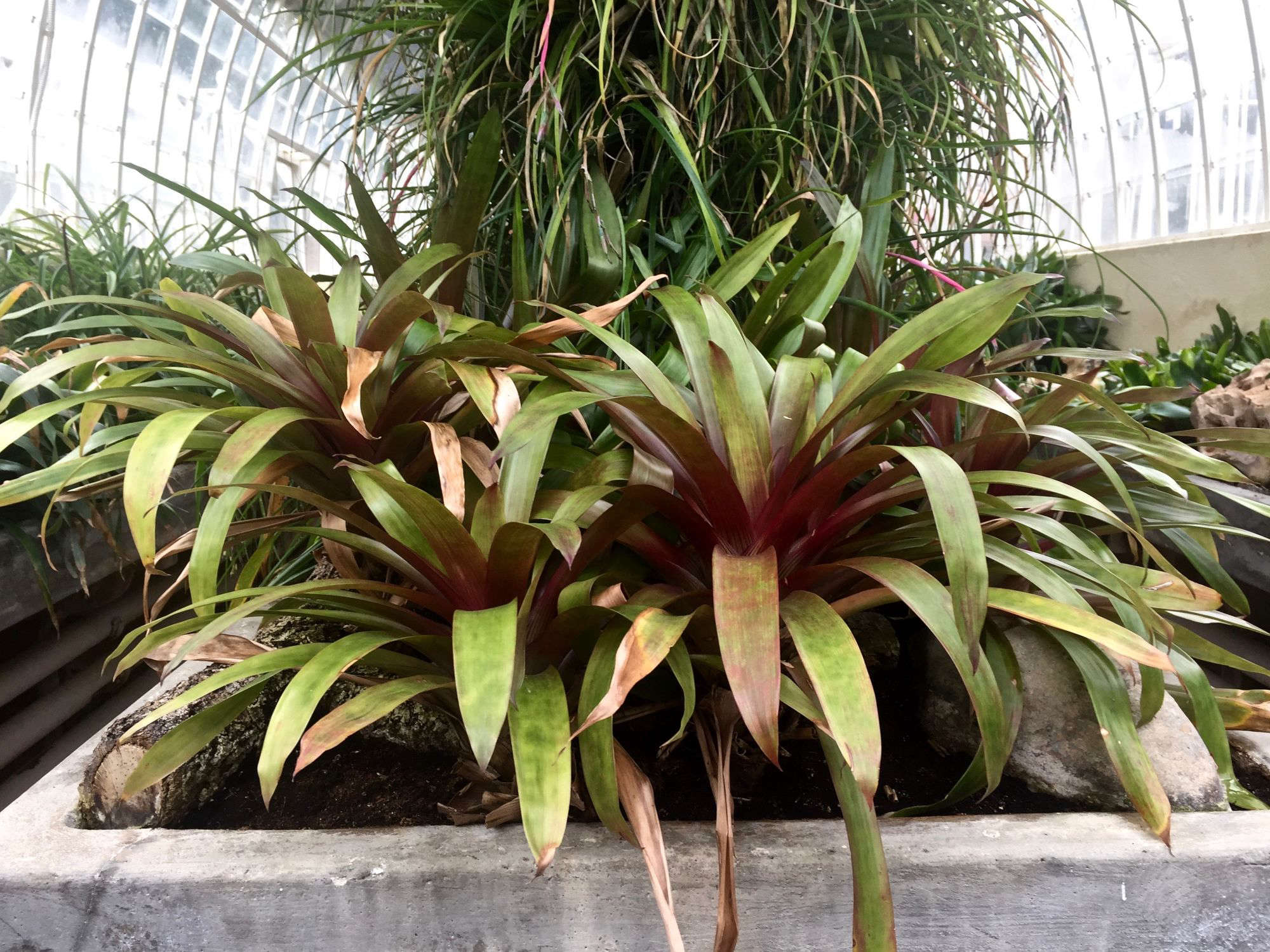
Ideal Growing Conditions
Bromeliads are naturally found growing as epiphytes or lithophytes, meaning they grow on other plants or rocks without causing harm. Their roots mainly serve to anchor them to their host. Air plants (tillandsias) take this to the next level, often lacking roots entirely and using branches for support. These plants absorb nutrients through their leaves and store water in their central “vase” structure. Some bromeliads also grow in very well-drained soil.
Originally from South America, bromeliads thrive in various climates—from tropical zones to cool mountain regions. While some can tolerate light frost, they generally prefer warmth and humidity. Broad-leaved, soft bromeliads do well in bright shade or morning sun, while those with thicker, spiky leaves often need more direct sunlight.
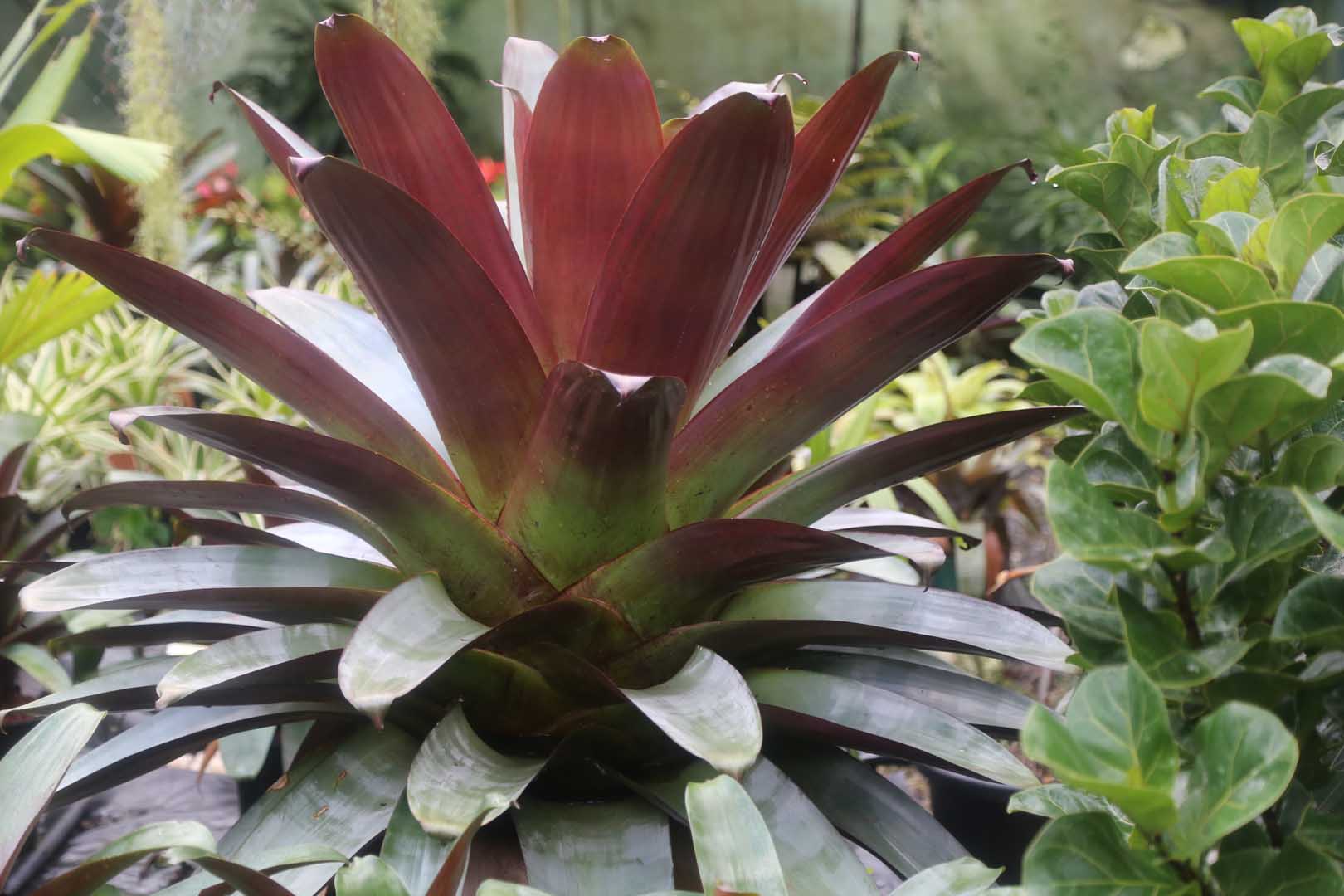
In the garden, bromeliads can be tied to trees or walls, where they will attach themselves over time. Old stockings are commonly used to secure them because the material eventually breaks down. Bromeliads also make excellent potted plants, thriving in coarse orchid potting mix for superior drainage. Larger varieties like aechmeas and alcantareas are perfect for adding dramatic flair to your garden.
For garden beds, keep your bromeliad in its pot with orchid mix and sink it into the soil. This clever method ensures the plant gets adequate drainage without compromising its appearance.
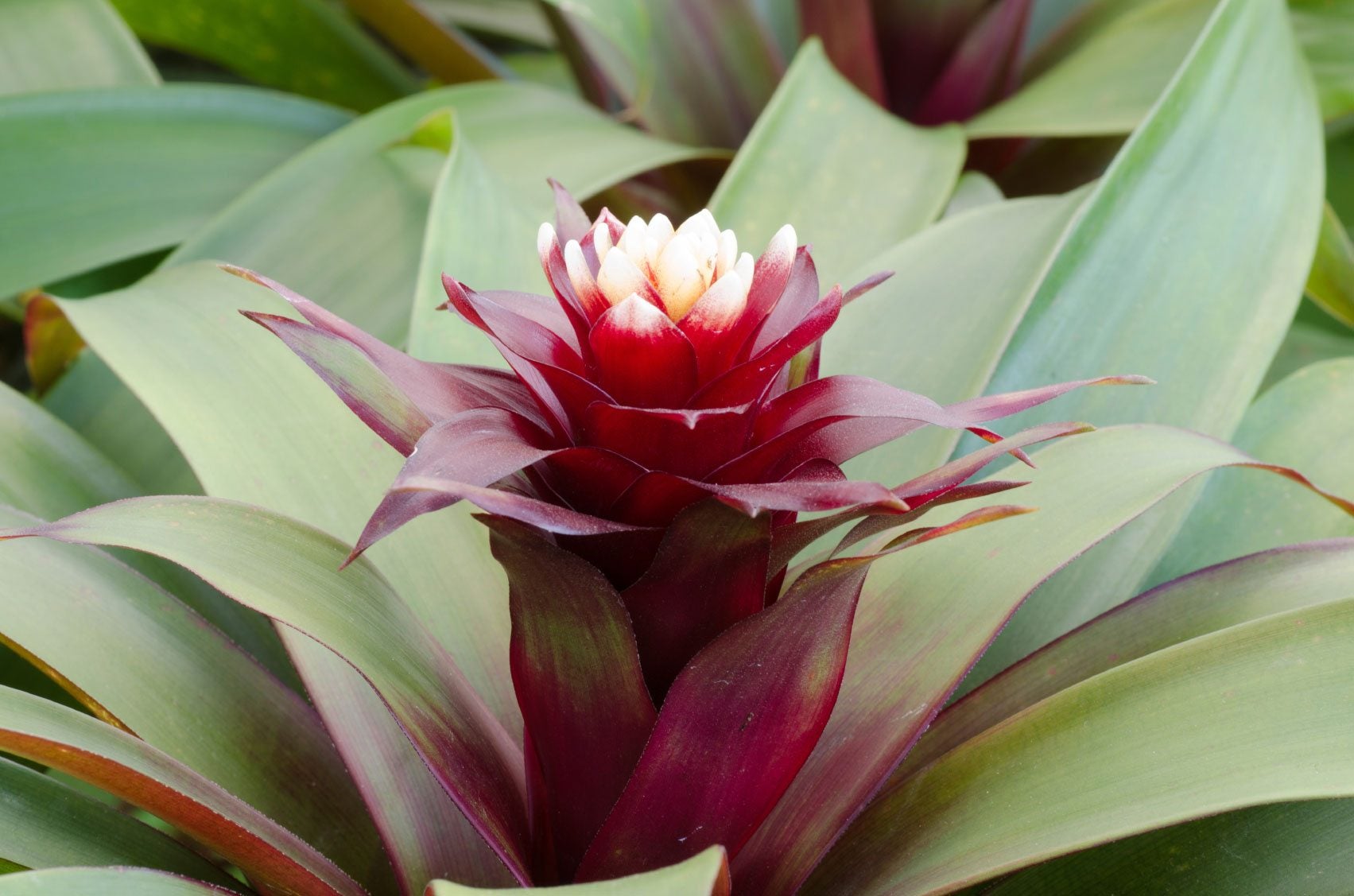
Watering and Fertilization Tips
Bromeliads have a unique watering system, as their leaves form a rosette that creates a central well to hold water. This well is the plant’s primary source of moisture and nutrients. When watering, ensure the well contains water, and don’t worry if the potting mix dries out.
For air plants, which don’t have a central well, misting the leaves regularly provides them with needed moisture. In hotter, drier conditions, mist weekly and reduce to every couple of weeks when the weather cools. Thin-leaved tillandsias may require more frequent misting in areas with low humidity.
To keep bromeliads thriving, light but frequent fertilization is key. Spraying the foliage every 2-4 weeks with a gentle solution like OCP eco-aminogro or OCP eco-seaweed will keep them healthy and growing.

Dividing Bromeliads for New Growth
A fascinating aspect of bromeliads is that once they flower, the main plant won’t flower again. Instead, it will produce several new “pups” at the base. As these pups grow, the original plant may start to wither and eventually die, leaving a mix of new growth and decaying leaves. To manage this, simply divide them.
When the pups reach about a third of the parent plant’s size, cut them off using secateurs, making sure to leave some woody tissue attached to the pup. Repot the pups in well-drained orchid potting mix, ensuring the base is not buried too deep. Use bamboo skewers to keep them upright if needed, then fill their central well with an eco-aminogro and eco-seaweed solution. With a little care, your new bromeliads will flourish!
Bromeliads are not just beautiful; they’re easy to care for and bring a splash of color to any garden. With their variety, unique growth habits, and simple maintenance, these plants are a must-have for plant lovers everywhere!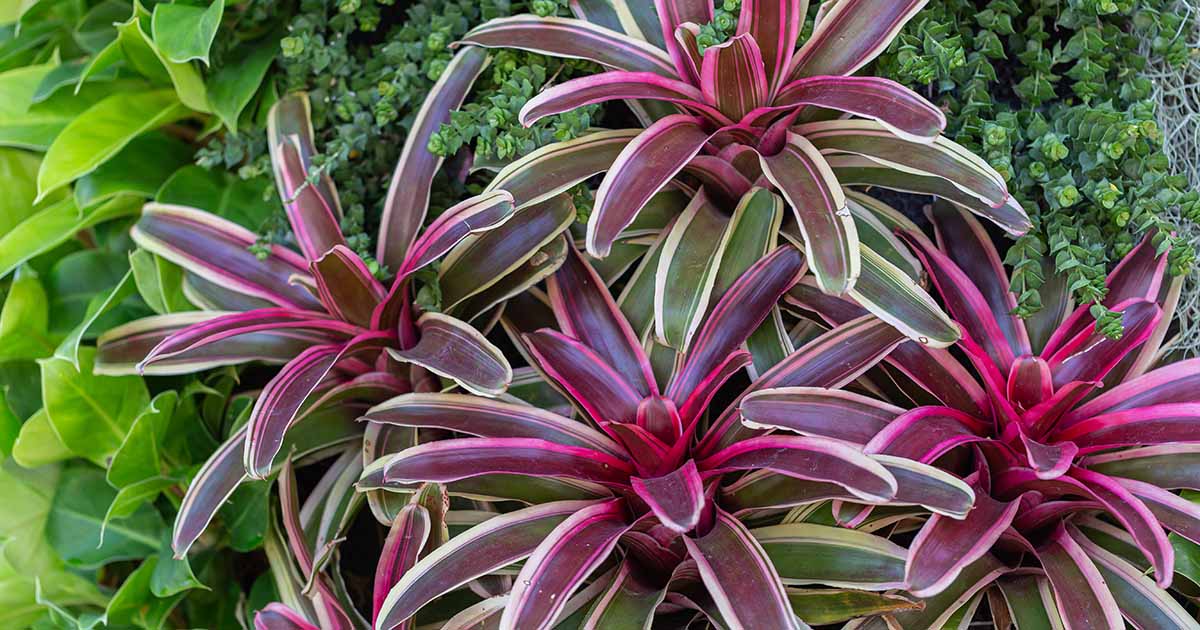
Pests & Diseases in Bromeliads: Prevention and Solutions
Bromeliads are generally resilient and resistant to pests and diseases, but there are still a few issues gardeners should keep an eye on. Here’s how to identify and manage the most common problems.
Scale Insects
Scale is the most prevalent pest affecting bromeliads. These small insects tend to gather on the lower parts of the leaves, forming a buildup that can damage the plant if left untreated. To manage this, begin by removing any old or damaged leaves. Then, soak the entire plant in a botanical oil solution designed for scale control.
After soaking, turn the plant upside down to ensure the solution drains out of the central well, preventing water from sitting inside and possibly causing rot. Allow the foliage to dry completely.
Important Note: Bromeliads are sensitive to oil sprays, especially those made from petroleum-based oils like white oil. These should be avoided. However, plant-based oils are safer, but it’s still wise to perform a test spray on a small area before fully treating the plant.
Grasshoppers
Grasshoppers can be another issue, as they often feast on bromeliad leaves. If you notice grasshopper damage, it’s easily controlled with a few applications of OCP eco-neem spray, which is effective and safe for the plant.
Root Rot
Overwatering and poor drainage can lead to root rot in bromeliads. To prevent this, make sure your bromeliads are planted in a well-draining medium like coarse orchid mix. If you suspect root rot, reduce the frequency of watering and consider repotting the plant in fresh, free-draining soil to improve air circulation around the roots.
By following these simple steps, you can keep your bromeliads healthy and free from common pests and diseases. Regular monitoring and timely intervention will help your plants thrive!
